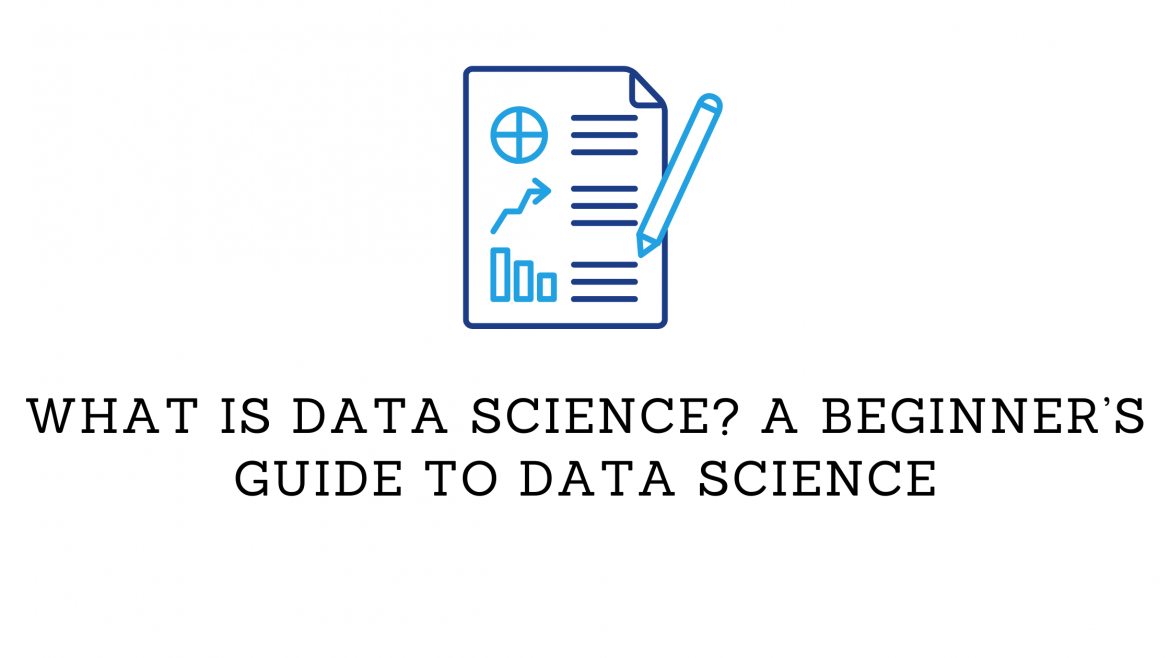What is Data Science? A Beginner’s Guide to Data Science
The noise around data science is reaching a fever pitch. This noise has grown since 2012 with the data science industry moving extremely quickly. The deeper companies are diving into the world of data science, the more divergence they are experiencing when defining what it actually is. When you Google ‘What is data science?’ You may get a number of varying definitions, most of them describing it as an interdisciplinary field that involves the application of advanced analytical techniques and scientific principles to extract meaningful information from raw data. Such information aids businesses in better decision-making and strategic planning.
Now, there are various disciplines that come under data science – data engineering, data preparation, predictive analytics, data mining, machine learning, data visualization along with statistics, mathematics, and programming. This is where people tend to get confused regarding data science. For example, some organizations consider a group called citizen data scientists, something that includes business analysts, data engineers, business intelligence professionals, data-savvy business users, or others who don’t have a formal data science background.
So, in this article, we would try to explain what exactly data science talks about and how you should step into this field as a beginner.
Data Science Explained
Companies collect a massive amount of data these days. You can simply check out the ‘Digital Wellbeing’ section of your smartphone. It will instantly show you how much screen time you spent in a day with the amount of time on each app. You can also view other information presented in the form of graphs or charts. By looking at those stats, you can decide whether to control your screen time, app usage, and other things. Similarly, companies that collect huge customer data and use it to get meaningful insights are better prepared to make the right decisions and earn huge profits. This process of gaining valuable insights and trends by analyzing diverse data sets is called data science.
Now, the entire process is very complex as the data gathered from various sources isn’t instantly ready for analysis. Disciplines like data mining, data cleaning, data preparation, and data engineering are involved to finally make the data ready for analysis. First off, you need to keep in mind that data is collected in the raw format and is usually unstructured. This data can be in the form of text, audio, video, GIF, or other formats. Such data needs to be prepared and cleaned, meaning professionals need to take care of inaccurate records, missing values, duplicate values, corrupt entries, and finally transform it into a single usable format.
Next, the cleaned data is taken for processing. In this stage, the cleaned data sets are processed for interpretation. Depending on the source of data being processed and what outcome is expected, data processing is done using various machine learning algorithms. One can mine the data to find hidden trends in a data set, usually historical data, and identify future patterns. The data can also be modeled, i.e., describing relationships between various types of information that are to be stored on a database through diagrams. Post this, the data is ready for analysis.
In the analysis stage, there are two popular methods followed – exploratory data analysis and predictive analysis. The former means exploring the data in every possible aspect and performing analysis so as to draw data patterns and understand the relationship between variables. With this, data scientists ensure that the results they produce are valid and applicable to any desired business outcome. On the other hand, predictive data analysis is used to forecast future events based on data. It uses statistics and machine learning techniques to create a predictive model and identify the likelihood of future outcomes based on historical data.
The last stage is nothing but data visualization. After the data is analyzed and the patterns and correlations are identified, data scientists need to communicate those findings to the stakeholders or business leaders. So, data visualization involves representing the information graphically using visual elements like charts, graphs, or dashboards and offer an accessible way to help people understand the outliers and trends clearly. These trends help business leaders make more informed decisions and create new business opportunities, predict future trends, optimize various business operations and generate more revenue.
How to Start a Career in Data Science
From the above information, you can infer that no one can say they are experts in data science. Beginners usually start with one of the aspects of data science and then move on to other fields. For example, one cannot directly begin working as a data analyst, they first need to know data engineering. so, we would recommend you first start grasping the data science foundational concepts like Python or R programming, core mathematics, calculus, statistics, and machine learning. It may take you a month or two if you are already familiar with these concepts and just need to brush up on your knowledge.
After the data science basics, one can move on to understand data preparation, data mining, predictive modeling, and statistical analysis. There are many data science tools that can help make your task easier in every stage of data science. Knowledge of those tools is also highly recommended. An online data science course is all you need to gain these skills and step into this field successfully.
| Homepage | Click Hear |

